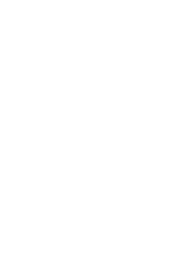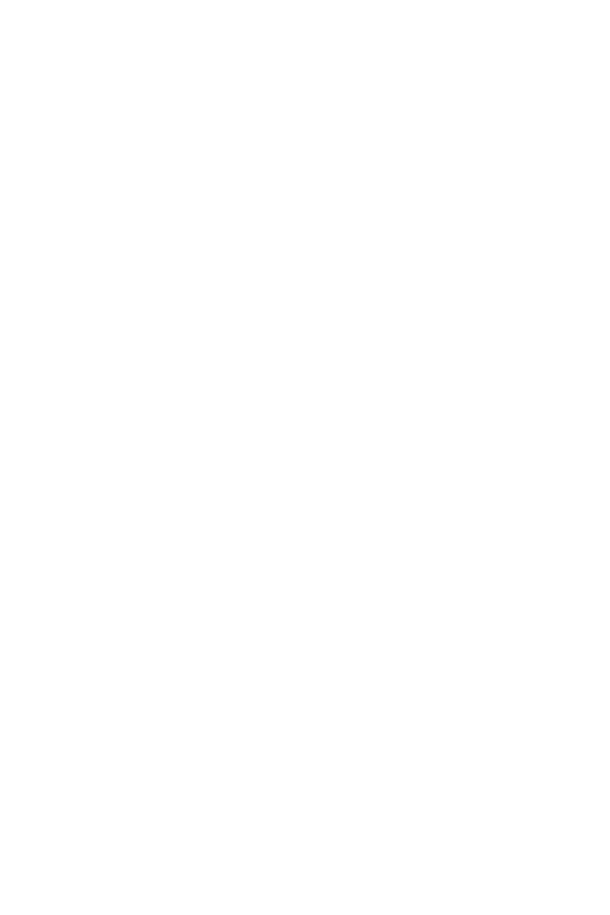 |
 |
 |

|
Alexandre Herchcovitch
Jumpsuit
Spring 2007
São Paulo
Gift of Alexandre Herchcovitch
2007.49.1
© The Museum at FIT
|
|
 |
GLOBAL FASHION CAPITALS
The Museum at FIT
2/6/2015-14/11/2015
The Museum at FIT presents Global Fashion Capitals, an exhibition that examines the rise of fashion cities around the world, including London, Milan, New York, and Paris. The exhibition also explores the factors that enable emerging cities, such as Seoul, Shanghai, Berlin, Istanbul, Johannesburg, São Paulo, Mumbai, and Stockholm, to rise to global prominence. As The New York Times noted in a 2008 article titled “The Sun Never Sets on the Runway,” at any given moment, somewhere in the world, a city is hosting a fashion week event. Fashion weeks are indeed continuing to multiply as emerging cities realize the economic value of the fashion industry, as well as the value of fashion as a source of “soft power” to communicate identity and spread cultural influence throughout the world. The exhibition makes the case that multiple factors—from economic conditions to government support to press interest—combine to help create a globally relevant fashion city.
|

|
Posted 19 June 2015
|
Share this:
|
|
More than 70 garments and accessories by designers from these cities are on display in Global Fashion Capitals. Ranging from a circa 1890 Charles Frederick Worth couture cape to a spring 2015 beaded fringe dress by Lagos designer Lisa Folawiyo, all are from the museum’s permanent collection, and many of the designers have never before been featured in an American museum.
|
|
|
|
|
|
Global Fashion Capitals will be supplemented by a symposium, jointly hosted by The Museum at FIT and CUNY, on October 13, 2015.
The symposium’s morning session will include a fashion show featuring five designers from emerging capitals, in order to offer attendees the opportunity to experience fashion from outside the established fashion capitals. This will be followed by a panel discussion focusing on the fashion industry in various cities and the factors, such as the city’s distinctive style, economic conditions, and sociological element, that shape the fashion environment. The morning’s events will also include a student fair in which the museum
will invite students to interact with various international consulates and designers to learn more about international fashion industries.
The Global Fashion Capitals exhibition opens with a digital style map, featuring the most current global fashion trends. Street style and runway images from 20 fashion capitals show an identity unique to each city. The exhibition then continues thematically by city, beginning with the established fashion capitals of Paris, New York, Milan, and London, followed by the emerging cities.
|
|
|
|

Big Park
Dress
Spring 2015
Seoul
Gift of Big Park
2015.2.1
© The Museum at FIT
|
|
|
|
|
|
The couture designs of Charles Frederick Worth—an Englishman working in Paris—exemplify the emergence of the modern Parisian fashion system built on a long history of luxury production. To create the mystique of Parisian fashion, designers, manufacturers, and artisans work in concert with journalists, retailers, stylists, models, educators, and photographers. A sporty knit suit by Gabrielle “Coco” Chanel from the 1930s is displayed alongside an elegant circa 1950 navy silk chiffon evening ensemble by Christian Dior. More recent works include Christian Louboutin’s metallic spiked stilettos embellished with rhinestones and an ensemble by emerging couturier Bouchra Jarrar.
|
|
|
New York is introduced with a green-and-brown iridescent ruched taffeta gown by Nettie Rosenstein, who, during the 1930s, competed with French designers. New York solidified its position as a fashion authority by establishing New York Fashion Week (then called Press Week) in 1943. Additionally during this time, the New York–based publications—Vogue, Harper’s Bazaar, and Women’s Wear Daily—began focusing on fashion coming out of New York. Fashion schools, such as FIT (founded in 1944), educated the nation’s leading designers. During this period, New York manufacturers created the majority of ready-to-wear garments for the nation. A simple cotton dress by Claire McCardell from the 1950s represents the active sportswear style of the American woman. The latter half of the 20th century ushered in a new wave of American designers such as Ralph Lauren, Donna Karan, and Alexander Wang, each creating a unique style of American ready-to-wear; examples of these designers’ work will be on display.
|
|
|
Italian design began not in Milan but in Rome when, during the 1940s, a group of couturiers began to emerge. By 1951, Italian fashion had caught the attention of the international press. Magnificent couture dresses from Fontana and Valentino are featured in this section of the exhibition, along with exquisite examples of finely crafted accessories from Florence-based houses, including Gucci, Pucci, and Ferragamo. In 1972, a shift in the Italian fashion industry occurred that placed an emphasis on prêt-à-porter designers showing in Milan. During the 1980s and 1990s, Milan supported a new generation of designer-entrepreneurs, such as Gianni Versace. A bold leopard and baroque print suit by Versace from circa 1992 complements the brilliant colors of Prada’s fall 2007 ensemble, showing the breadth of Milanese fashion. An example of exemplary new Italian design is Stella Jean’s colorfully printed fall 2014 dress and coat that show a fresh mix of menswear details and African prints while remaining faithful to Milan’s reputation for luxurious tailoring and elegant prêt-à-porter.
|
|
|
“Swinging London” rose to international fame for its exciting new fashions during the 1960s. London’s creative fashion industry was led by small, independent, yet innovative labels. Vivienne Westwood’s quirky plaid design from 1998 speaks to this radical tradition. Other works include a deep purple devoré velvet gown by John Galliano and Alexander McQueen’s floral-and-butterfly print dress, cinched at the waist with a crocodile corset from his Natural Dis-Tinction, Un-Natural Selection collection.
In the emerging fashion capitals section, Global Fashion Capitals features talented designers from various cities throughout the world. To trace the rise of Tokyo and Antwerp as fashion centers during the 1980s, the designers of the “Japanese fashion revolution”—Yohji Yamamoto, Issey Miyake, and Rei Kawakubo—are displayed, along with designers of the Antwerp 6, including Walter Van Beirendonck and Dries Van Noten. Though these designers presented their collections in Paris, they drew significant attention to Tokyo and Antwerp as fashion cities.
|
|
|
Brazilian design is represented by Alexandre Herchcovitch, whose avant-garde prints and motifs have modernized the concept of Brazilian fashion. His spring 2007 jumpsuit, for example, fuses Ndebele tribal-style beadwork and Brazilian colors into a contemporary silhouette. South African designer Nkhensani Nkosi of Stoned Cherrie revolutionized streetwear in Johannesburg in the post-apartheid era, designing fashion that united South Africans with a political identity. Her spring 2005 gown embodies the brand’s signature bricolage of fabrics, motifs, and embellishments. Shanghai designer Masha Ma creates depth with texture and textiles in her white fall 2014 ensemble. She, like many of the designers represented in the exhibition, embodies the global scope of today’s fashion industry with offices in both Shanghai and Paris.
|
|
|
Two sides of Seoul fashion are shown through an ensemble from designer Lie Sangbong’s 2006 Hangul (Korean script) collection, which drew international press when he presented it in Paris, as well as Big Park’s graphic spring 2015 dress, in which designer Sooy Park melded her childhood memories of the Korean countryside with global streetwear style.
Agatha Ruiz de la Prada’s dramatic yellow polka-dot sheath from spring 2014 exemplifies the vibrant energy in Madrid fashion, while the asymmetrical suit, layered over a fringed denim skirt and sheer trousers by Ann-Sofie Back for her diffusion line, BACK, represents distinctive-yet-wearable Stockholm fashion. New Delhi–born Manish Arora incorporates a patchwork of
Bollywood motifs into his colorful spring 2006 ensemble finished with gold embellishment, yet demonstrates his international reach by presenting his collections in Paris. A structural ensemble by Dion Lee of Sydney illustrates his signature “filter technique” of complex fabric manipulation.
|
|
|
Brenda Diaz de la Vega, editor-in-chief of Harper’s Bazaar Mexico and Latin America ranked Mexico City as the number-one fashion market in Latin America. Designs by Ricardo Seco and Carla Fernández convey an internationally fashion-forward aesthetic with references to Mexican craft tradition. Fernandez’s 2009 suit incorporates purple suede charro appliqué, while Seco’s spring 2014 ensemble includes geometrically beaded sneakers from his collaboration with New Balance. The shoes’ motifs are inspired by the artwork of the Huichol people and are hand-beaded in Mexico.
|
|
|
Brenda Diaz de la Vega, editor-in-chief of Harper’s Bazaar Mexico and Latin America ranked Mexico City as the number-one fashion market in Latin America. Designs by Ricardo Seco and Carla Fernández convey an internationally fashion-forward aesthetic with references to Mexican craft tradition. Fernandez’s 2009 suit incorporates purple suede charro appliqué, while Seco’s spring 2014 ensemble includes geometrically beaded sneakers from his collaboration with New Balance. The shoes’ motifs are inspired by the artwork of the Huichol people and are hand-beaded in Mexico.
As the organizer and creative director of Mercedes-Benz Kiev Fashion Days, Daria Shapovalova has created a platform to promote Kiev designers, such as Anton Belinskiy and Anna K, both in Ukraine and internationally. Belinskiy’s dramatic floor-length turtleneck dress with graphic under layer is on display alongside a feminine ensemble by Anna K.
Global Fashion Capitals is organized by Ariele Elia, assistant curator of costume and textiles, and Elizabeth Way, curatorial assistant, The Museum at FIT.
|
|
|
The Museum at FIT
The Museum at FIT, which is accredited by the American Alliance of Museums, is the only museum in New York City dedicated solely to the art of fashion. Best known for its innovative and award-winning exhibitions, the museum has a collection of more than 50,000 garments and accessories dating from the 18th century to the present. Like other fashion museums, such as the Musée de la Mode, the Mode Museum, and the Museo de la Moda, The Museum at FIT collects, conserves, documents, exhibits, and interprets fashion. The museum’s mission is to advance knowledge of fashion through exhibitions, publications, and public programs. Visit fitnyc.edu/museum.
The museum is part of the Fashion Institute of Technology (FIT), a State University of New York (SUNY) college of art, design, business, and technology that has been at the crossroads of commerce and creativity for 70 years. With programs that blend hands-on practice, a strong grounding in theory, and a broad-based liberal arts foundation, FIT offers career education in nearly 50 areas, and grants associate, bachelor’s, and master’s degrees. FIT provides students with a complete college experience at an affordable cost, a vibrant campus life in New York City, and industry-relevant preparation for rewarding careers. Visit fitnyc.edu.
The Couture Council is a philanthropic membership group that helps support the exhibitions and programs of The Museum at FIT. The Couture Council Award for Artistry of Fashion is given to a selected designer at a benefit luncheon held every September. For information on the Couture Council, call 212 217.4532 or email couturecouncil@fitnyc.edu.
Museum hours: Tuesday–Friday, noon–8 pm; Saturday, 10 am–
5 pm. Closed Sunday, Monday, and legal holidays.
Admission is free.
See the Agenda>
FASHION INSTITUTE OF TECHNOLOGY
227 W 27th St
New York, NY 10001
United States
+1 (212) 217-7999
fitnyc.edu
|
|
|
|
|
|
|


